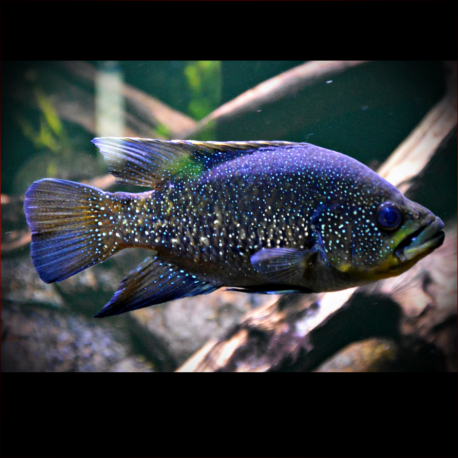More info
Datasheet
| Minimum Tank Size | 200 litres / 52.83 US gallons |
| Maximum Size | 28.0cm / 11.02inches |
| Temperature | 17°C / 62.60°F - 28°C / 82.40°F |
| Hardness | 8-25ºdH |
| pH | 6.5-8.0 |
General Description
The Paratilapia polleni, commonly known as the "marakely" in Madagascar, is the sole species in the Paratilapia genus. This cichlid, highly endangered in the wild due to habitat destruction and competition from introduced species, displays variability in its coloration patterns, with forms such as large-spotted and small-spotted. Encountering challenges in captive breeding, this species requires stable water parameters and careful attention to avoid diseases like velvet disease or "Ich."
Aquarium Setup
For a proper tank setup, it is advisable to provide hiding spots using clay pots, roots, or driftwood. While plants are not mandatory, they offer additional shelter. A sandy substrate is preferred, although fine gravel can also be utilized.
Behaviour
The Paratilapia polleni generally displays peaceful behavior towards other fish species, except during breeding when it becomes more aggressive, especially within its territory. It tends to be aggressive towards conspecifics and is best kept as a single specimen or pair unless in a large aquarium environment.
Feeding and Diet
In its natural habitat, the Paratilapia polleni is a piscivore, but in captivity, it readily accepts a variety of live, frozen, and dried foods. It is recommended to offer a diverse diet, avoiding any animal meat.
Reproduction & Dimorphism
Reproduction in aquarium conditions is infrequent, with Paratilapia polleni being a bi-parental substrate spawner. The fish usually pair off naturally, displaying courtship behaviors before spawning. Male fish exhibit darker coloration during courtship, and female fish lay eggs attached to various surfaces, guarded by the male. Sexual dimorphism is noticeable, with adult males being larger and possessing longer fin extensions.
Habitat and Distribution
Endemic to Madagascar, the Paratilapia polleni adapts to various aquatic environments on the island, from altitudes reaching 1500m with temperatures as low as 12°C to hot springs reaching 40°C. It thrives in a range of water chemistries, from alkaline to acidic blackwater habitats to slightly brackish conditions.

